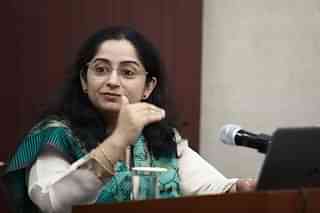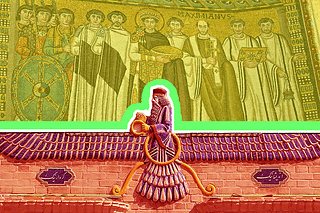Culture
India Can Teach The World Tolerance
Keerthik Sasidharan
Dec 20, 2014, 02:30 PM | Updated Feb 24, 2016, 04:21 PM IST
Save & read from anywhere!
Bookmark stories for easy access on any device or the Swarajya app.

The truth of tolerance, as our ancients knew, can only be pieced together by accounting for a variety of perspectives. To learn to do so is hard work. But not as hard as resisting the lure of our pet prejudices.
On October 2, three protesters walked into the Australian Parliament wearing a Ku Klux Klan hood, a niqab and a helmet. They were protesting that, while Muslim women who chose to cover their faces―in the name of their religious obligation―were allowed into the parliament’s viewing galleries, others with “facial coverings” were asked to sit in a separate area.
What followed was a debate along familiar lines: from denouncements of the KKK hood to vigilante attacks on Muslims in Australia. While in itself this debate isn’t new, this particular example brings to the fore the question of how a multi-ethnic State that aims at being just, democratic and liberal, makes exceptions to the law for those who respond to their ‘obligations of conscience’. More concretely, such instances―however silly the protests may seem―force us to rethink what exactly ‘tolerance’ means.


Such ‘obligations of conscience’ abound the world over in a variety of contexts. Sikhs in Canada who refuse to remove their turbans, native Americans who ask for the right to eat peyote (a psychoactive plant-drug), Turkish women who insist on wearing the headscarf in government institutions, the Ananda Margis in eastern India who fought for their right to perform the Tandava dance, and so on.
The mutability of such obligations is contested in the public imagination by those on one side who insist that only by abandoning these obligations can the adherents assimilate with the majority, and by those on the other who insist such obligations can take many forms and representations. The latter often insist that a case-by-case appraisal is key to evaluating the claims. (On a spectrum, at one end is the Islamic State in the city of Raqqa, where the mere fact of being an Alawite can get you killed; and on the other is Germany, where consensual incest is an idea deemed worthy of debate.) In either instance, what such claims tell us is how far the idea of tolerance is critical for the grounds from which societal self-conceptions emerge.
As demographic shifts occur, thanks to immigration, states like France or Australia now face unique challenges that go to the heart of who they are. (Samuel Huntington’s unblinkered last book about Catholic Latino immigration into a Protestant United States was called Who Are We: The Challenges to American National Identity). The post-1960 wave of immigration to these countries forces them to ask questions of the following kind: Is France a secular State in a Christian nation? Can the UK condone curricula in accordance with the Shari’ah? The rise of extreme-Right xenophobic forces in many of these societies, which were historically homogenous groupings of customs, rituals, practices and myths, tells us of the schizophrenia contained in a liberal State and the originary grounds out of which these societies emerged. Genteel, systemic intolerance that was ignored until now finds more virulent forms of expression―including in mass murders as we saw in Norway.
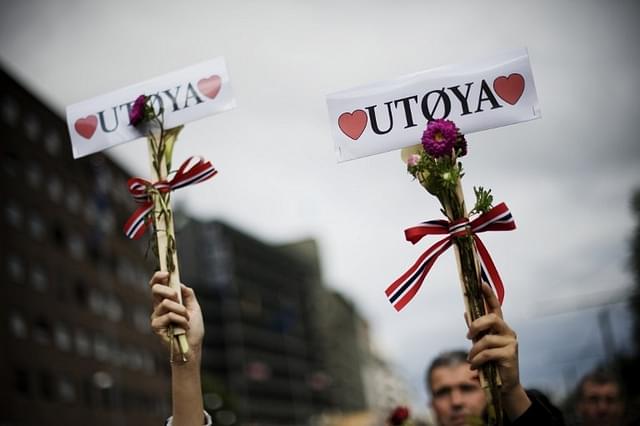
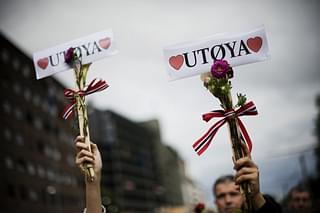
The convenient reductionism of India’s tryst with ‘tolerance’
If one were to believe in the media coverage before the 2014 Indian elections, this country was headed down this path. The emergence of a right-leaning BJP with Narendra Modi at its helm led to an overblown rhetoric in global and domestic media of India’s imminent turn to an intolerant Fatherland marked by savage riots and organised pogroms (note how Modi’s election threatened India’s inclusiveness, secular culture, moral self-conception)!
In retrospect, after the first six months of the Modi government, it is evident that hyperventilating claims of India’s intolerance in the mass media were just as political as the Enlightenment and Orientialist narratives of the past where the Hindus were portrayed―including by both, Voltaire and Herder, the prophets of Enlightenment and counter-Enlightenment―as embodiments of tolerance. Notwithstanding the fact that such apocalyptic readings reveal less about Modi and more about the political economy of the wolf-whistles let out into the electronic wilderness by prominent media channels; what is striking is the convenient reductionism of India’s tryst with ‘tolerance’ to one man or one political party.
In a way, part of the reason why much of India’s middle class―that most likely supported Modi―looked down contemptuously at these columns and elsewhere was the unthinking reduction of their complex inner lives and moral intuitions about tolerance to a simple vote for or against Modi. Responding to simple-minded portrayal of all Israelis as singularly marked by no thought other than the ongoing conflict, the great Israeli writer (and left-liberal activist) David Grossman said: “It is insulting even to reduce (our) life to (Arab-Israeli) politics…(that) we are confiscated by the Situation (hamatsav, in Hebrew).”
Far be it for me to suggest what is insulting or not, what is evident is that the reality―both textual and in practice―of what tolerance means in India is more complicated and requires us to sift through evidence. To the best of my knowledge, there has never been a historic study of what ‘tolerance’ means in India along the lines of popular works like Jennifer Hecht’s Doubt, James Bowman’s Honor and Darrin McMahon’s Happiness, or the multivolume scholarly meditation such as Michel Foucault’s History of Sexuality. This isn’t an easy task; for any such effort would have to struggle with philological analysis, changing institutional structures, stickiness of religious ideas, and mutations in the conceptions of ‘the other’.
The question of taxonomy
At its simplest, there is the question of taxonomy when talking about tolerance. What exactly are we talking about? On one end, we have scholars like Wendy Doniger who write that India has no word for ‘tolerance’, at least in the sense that it is used in the post-Enlightenment Western context. She strangely sidesteps the question if Indian sociological responses (via jati, varna, dharma, advaita) allowed for dialogical responses that historically obviated the need for a modern definition of tolerance.
On the other end are taxonomical debates led by the RSS about whether all Indians are Hindus or not and if Hindutva informs every Indian’s identity. Notwithstanding the oft debated aspects of such questions about identity, one consequence of a maximalist definition of Hindu is that it sweeps aside any critical glare at a complex set of strategies and mechanisms to manage resentments, facilitate reconciliation and allow rapprochement between communities that we these days summarily call ‘tolerance’.
The Indian State and its institutional organs―which are more powerful than any one individual, including the Prime Minister―have historically been pragmatic and sought to walk a tightrope between fidelity to a rational reading of the past and the exigent passions of the present. This means that they have been cognizant of negotiating between ‘obligations of conscience’ and the pragmatic needs of running the country.
For many, including historians like Ramachandra Guha, who has voiced his antipathy towards Modi, this institutional bias towards ‘what works’, the status quo, the labyrinthine array of checks-and-balances is the ‘strength’ that will keep Mr Modi in check. Whether one sees Indian institutions as strong, or merely the carapace surrounding a more sordid reality, as described by the narrator in Shashi Tharoor’s The Great Indian Novel: “India is not an underdeveloped country but a highly developed one in an advanced state of decay” ―what these institutions have congealed around the idea of ‘tolerance’ are a number of practices that tiptoes past extremist positions to arrive at something more manageable and workable.
One suspects, the rising sense of disappointment that many on the far-Right feel towards Modi is a consequence of how governance forces one down the middle path. To understand how Indian institutions understand and respond to such competing obligations was illustrated well in a case involving the relatively unknown (in India) religious group called Jehovah’s Witnesses.
In 1985, three children who belonged to Jehovah’s Witnesses in Kerala refused to sing the Indian national anthem. The children said they weren’t against the spirit of the anthem, but it was the act of ‘singing’ that violated their conscientious religious faith which instructed them to only worship Jehovah. They were suspended by the school authorities for ‘disrespecting‘ the national anthem.
The Supreme Court of India threw out a Kerala High Court decision and ordered the school to readmit the children citing that the constitution under Article 19(1)(a) and 25(1) protected the “right to freedom of conscience and freely to profess, practice and propagate religion.” It also noted that the students stood in silence during the singing and had consented to belief in the spirit of the anthem. What this Supreme Court ruling did was allow for individual liberty in day-to-day practice of religion, but only and insofar as the individual showed respect and decorum for the larger communal practice.
The visible emblems of citizenship weren’t reduced to the practice of its rituals but to a deeper sense of affiliation, whose outward manifestations may understandably differ. In a sense, the Indian courts decided that there was no need to throw out the baby of tolerance out with the bathwater of majoritarian practice.
Tolerance: Modern and old
Tolerance is, however, not in itself a modern idea―in India or elsewhere. Ancient Roman philosopher Cicero in his writings praised tolerantia rerum humanrum (tolerance towards all human affairs)―which to him was a personal quality that wise men must cultivate along with contemptio fortunae (contempt of fate). It was the quality of individual character that withstood adversity―ill health, bad fortune and so on―in accordance with the laws and customs of the times, without giving in to self-pity.
Cicero’s adjectival idea of tolerance as a set of qualities to be fostered within an individual corresponds with the abstract nouns sthitaprajna (equanimity) and sahishnuta (forbearance) that are used in the Mahabharata as among the highest virtues in an individual. In a certain delicious way that belies the ‘clash of civilizations’ thesis, the stoicism that Zeno in Greece, and Seneca and Epictetus in Rome, imagined, finds their crystalline counterparts in Lord Rama and Yudhishthira of the Indian epics.
Our modern idea of tolerance with its positive tenor can, arguably, be captured by the Sanskrit neologism samadarshana (to view all modes of investigation equally). That said, this isn’t a new invention either. At least Thotakacharya in the 9th century uses the word to suggest that his guru Sri Adi Shankara was the sublimating end of all philosophical investigation. Implicit in a term like samadarshana is the supposition that there is an Archimedean point to stand, from which the observer can look at the world dispassionately.
More than a millennium earlier, a subtler insight was in play. Among the Jains, the recognitions that truth―sometimes even objective facts―is contingent on the observers’ status and epistemic capacities is operationalised into a philosophic worldview through their principle of anekantavada (a theory of ‘non-one-sidedness’ as the great scholar B.K. Matilal translated it). Here, the incomprehensibility of a unitary Truth is compensated by taking into account many perspectives.
A case can be made that the early experiments with democracy in republics such as Licchavis (where Mahavira was born) found legitimacy, thanks in part to the prevalence of such philosophic undercurrents. The Buddhists traditionally, and as part of their inner investigations, relied on ideas such as upekkha (an apabhramsha of Sanskrit upeksha, loosely translated as ‘equanimity’, ‘indifference’ or ‘forbearance’) to motivate the need to cultivate tolerance among communities. And if one goes even further back to the early Rg Vedas―the recognition that there are many different names by which we cogitate the nature of some transcendental truth is captured by the fragment ekam sat, vipra bahudha vadanti (the truth is one: sages call it by various names).
Principled toleration
Incidentally, Prime Minister Modi has often announced, including during his Japan trip, he has an ‘Idea of India’, too; it was summarised in this Rg Vedic verse fragment. Implicit here is the fact that any claims to a unique method of perceiving truth is untenable and against the ‘idea of India’. Elsewhere in the Government of India, the idea that India’s collective memory was born out of an accommodating spirit emerges often. The Supreme Court of India in its ruling in the Jehovah Witnesses case concluded by saying:
We only wish to add: our tradition teaches tolerance; our philosophy preaches tolerance; our constitution practices tolerance, let us not dilute it.
Hidden in this boilerplate response by the apex court is the reality that tolerance in a heterogeneous society implies the existence of disapproval followed by a reluctant approval by the majority community. The hard and interesting problem is why and how exactly the disapproval eventually becomes an approval. What motivates this transformation?
The highest court’s ruling puts into practice the ethos that legal scholars call ‘principled toleration’. It is what most liberal-democratic societies have evolved with regard to religious communities―a tolerance on the basis of some defining principle. The question then is: Where does the ‘principled’ in the phrase ‘principled toleration’ find its purchase? And it is in delineating and fleshing out this ‘principle’ that India’s experience with tolerance vis-à-vis religions, languages and ethnicities stands in direct contrast with the West’s increased discomfort with immigrants and their burdens.


Historically, there have been various reasons why ‘toleration’ has been deemed important. For Thomas Hobbes, the 16th century lodestar of modern Western political philosophy, the reasons to be tolerant are simply because of the inconvenience of blood. As per him, in any heterogeneous society, one group would like to wipe out the other, but to do so would lead to a ‘war of all against all’. Given the reality of resultant strife and loss, Hobbes views tolerance as the best among all evils.
For philosopher John Locke in the 17th century, tolerance was necessitated by the intrinsic limitations of the State to change religious beliefs without indulging in mass violence (of the sort, say, Tipu Sultan inflicted on Mysore or Malabar. Or the Conquistadors did in Mesoamerica). Since the potentates in Delhi can’t change religious beliefs of millions of Indians, the Lockean argument goes: We might all learn to be tolerant. The Lockean reason for tolerance is born out of the intransigent nature of private beliefs and the need for the State to enable citizens to transact with each other in public.
A more modern reason for tolerance is cognisant of the limits of information processing by rational constructs such the State. This result is an inflected interpretation of Locke. The most prominent version of this argument comes from American professor of law Frederick Schauer of the University of Virginia who says that the State cannot be trusted to recognise what kind of intolerance must be stomped out. The State, like any artifice marked by the conceit of planning, does not have the resources to compute the ‘best’ values and beliefs its citizens must entertain; so tolerance is an efficient belief-calibrating mechanism. Note that this is in contrast to Confucian (and later Communist) ideas where the State was deemed to know what set of values were best for you. For Schauer, tolerance becomes to a plethora of beliefs what the markets are to commercial trade―an arena for updating true beliefs or prices.
A recognition of ignorance
In all of the above, tolerance has a stench of consequentialism―that is, tolerance is a consequence of the need to manipulate the outside world and arrive at the best set of resources. When civic virtues like tolerance are motivated through a calculus of cost and benefit―at its extreme we arrive at instances of mass annihilation. There is an argument to be made that the industrialised genocide during the Nazi era was a logical outcome of a consequentialist approach to tolerance. They could get away with the murder of the Jews and other minorities, and so they murdered them. Ironically, in 1923, right around the time the Nazis were marching to power, radical Zionist thinker Vladimir Jabotinsky wrote about tolerance as he saw it:
Emotionally, my attitude to the Arabs is the same as to all other nations―polite indifference.
India and Indic religions have, however, motivated tolerance differently. Earlier in the 20th century, philosopher-President S. Radhakrishnan, who found inspiration in Swami Vivekananda’s revivalist calls and Mahatma Gandhi’s public-spiritedness, saw the idea of tolerance as nothing new to the Hindu tradition. Radhakrishnan found a ‘moral’ argument for tolerance. To him, philosophical Hinduism (via the monism of Advaita) was marked by a ‘positive fellowship’, thanks to its anti-dogmatic ethos that didn’t believe in an exclusivist path to truth. Fleshing out his ideas further, he wrote:
Tolerance has two sides, a negative and a positive. Negatively it rejects the claim that any one type of religion has absolute, final, universal and exclusive validity. The surrender of this self-assertive, aggressive claim is essential for the recognition of other forms of religious belief and practice which also bring men nearer to the Divine. The positive side is a sensitiveness to truth wherever it is found, an appreciation of the values found in religions, a creative assimilation of the elements of truth and a consequent enrichment of our own beliefs.
Tolerance to Radhakrishnan and to the larger Indic civilisational ethos is a natural consequence of recognising the fallibility of our knowledge, our epistemological choices and a clash of definitions. The more information a society has accumulated, as T.S. Eliot notes in his essay The Perfect Critic, an equally staggering amount of ignorance is born among those who have no access to this body of new knowledge. The tolerance that Radhakrishnan wrote about lies in fostering the recognition of this ignorance within oneself and in the inequality in access to knowledge in society at large.
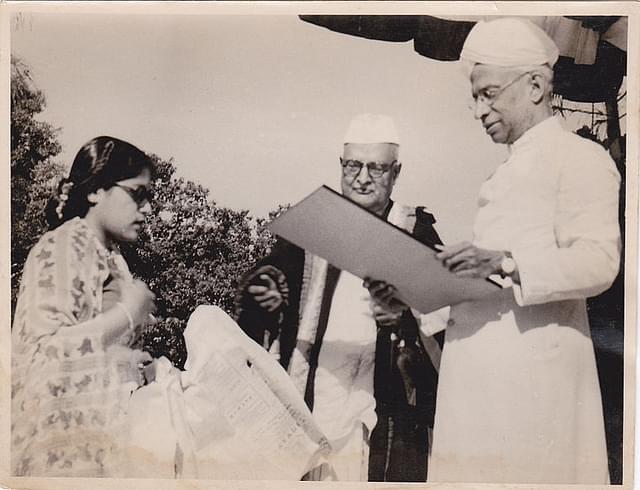
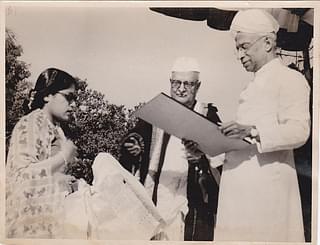
This contingency of belief may have been operationalised through an architecture of social alliances (including castes and sub-castes) but it wasn’t merely a blanket acceptance or worse, just indifference. Tolerance, in this dual register, has an internal and an external facet. This ‘two-sidedness’ does not refer to an inside and outside world, but are responses that internal tolerance is born out of identifying the limitations of our own selves, while the external tolerance lies in discovery of the world at large. Acquiring knowledge, while still recognising the incompleteness of the project, is critical for Indic ideas of tolerance.
Faced with the reality of immigration and new beliefs, there is a growing sense that the ‘principle’ in ‘principled toleration’ that informs most Western societies has little means to tackle religious obligations of conscience. Within academia, there is a growing chorus that tolerance is too weak an idea and passive in its motivation to aid in genuine religious liberty in Western societies where consequentialism has been critical.
Philosopher Martha Nussbaum of the University of Chicago has instead argued for cultivating ‘respect’ as a way to motivate religious liberty and equality, in contrast to merely ‘tolerance’ of religious practice of a minority. A modern, and analytically inflected reading of this idea of ‘respect’―and quite similar to what Radhakrishnan said decades earlier―is provided by moral philosopher Stephen Darwall of the Yale University. He makes a case for respect too, but distinguishes between ‘recognition respect’ and ‘appraisal respect’.
The first kind is something along the lines of ‘please respect her right to sing’―this is an idea of respect borne out of the mere fact that the other person is like us, a sentient being with specific capacities and needs. And the second kind is one that grants a positive value to the object of our evaluation. It is sort of saying, ‘please respect her singing, since it is extraordinary’.
The consequence of this kind of taxonomy is how we understand religion―whether as an extraordinary phenomenon, an institution that is first-among-equals or a supranatural provider of ontological beliefs―is directly tied to the ‘category’ we decide to put religion in. Inescapably, this ‘categoricity’ that we rely upon to adjudicate upon the uniqueness of religion is born out of the history and culture that informed the origins of the state and its judicial perspectives itself.
India has a distinct advantage and much to teach. This is an idea that PM Modi has often emphasised (India as vishwaguru―teacher of the world). But few have really taken upon themselves what exactly this world-teacher would teach. For now however, our media’s conceptions of tolerance remains afloat between reductionist commentaries of outsiders and expansionary definitions of nativists.
The truth of tolerance, as our ancients knew since the Rg Veda, can only be pieced together by accounting for a variety of perspectives. To learn to do so is hard work. But not as hard as resisting the lure of our pet prejudices.
Save & read from anywhere!
Bookmark stories for easy access on any device or the Swarajya app.
Keerthik Sasidharan was born in Palakkad; was educated in Canada and lives in NYC. His writings have appeared in The Hindu, The Caravan and other publications. He is working on his first book, to be published by Aleph Book Company.
Introducing ElectionsHQ + 50 Ground Reports Project
The 2024 elections might seem easy to guess, but there are some important questions that shouldn't be missed.
Do freebies still sway voters? Do people prioritise infrastructure when voting? How will Punjab vote?
The answers to these questions provide great insights into where we, as a country, are headed in the years to come.
Swarajya is starting a project with an aim to do 50 solid ground stories and a smart commentary service on WhatsApp, a one-of-a-kind. We'd love your support during this election season.
Click below to contribute.


